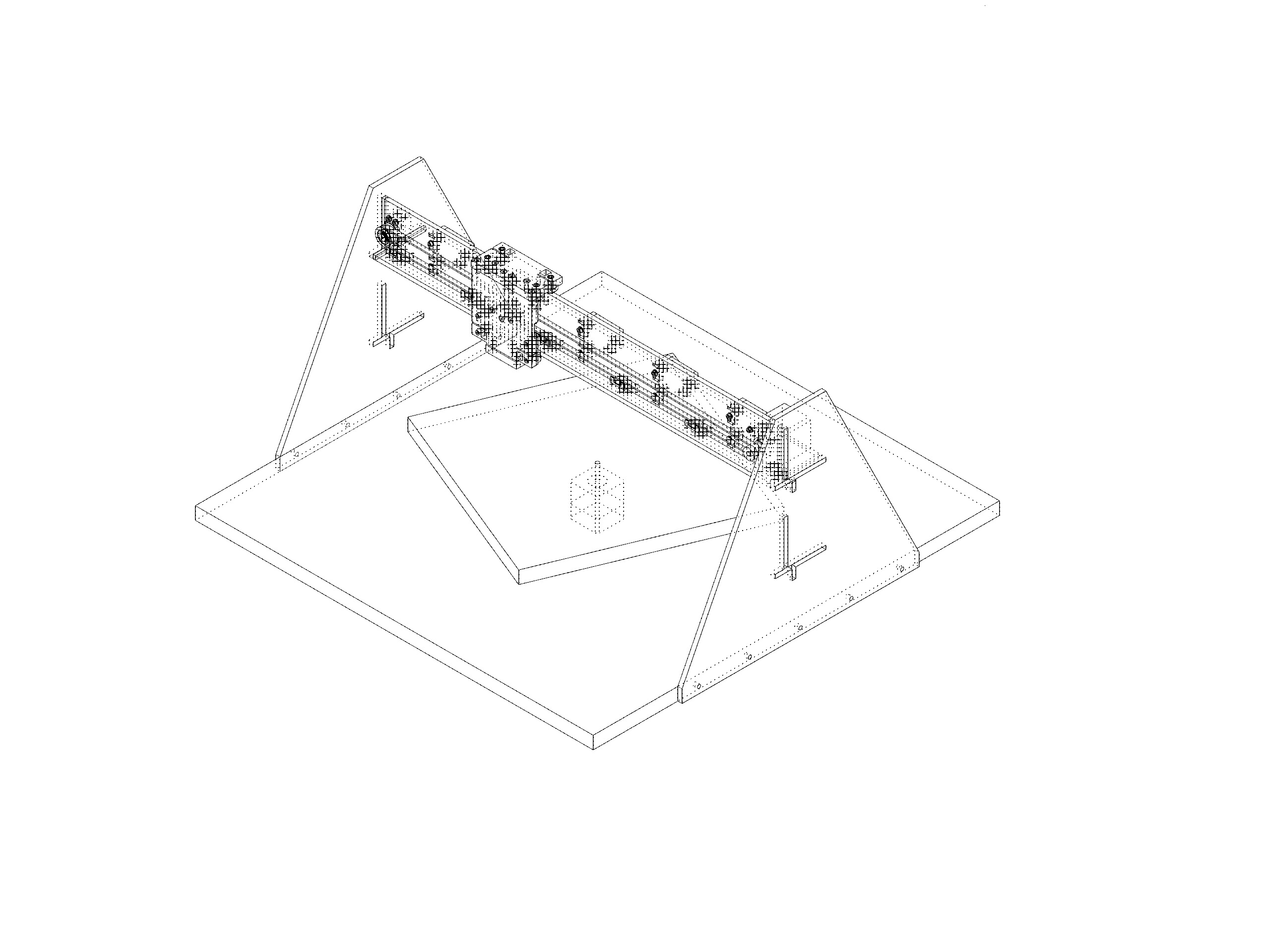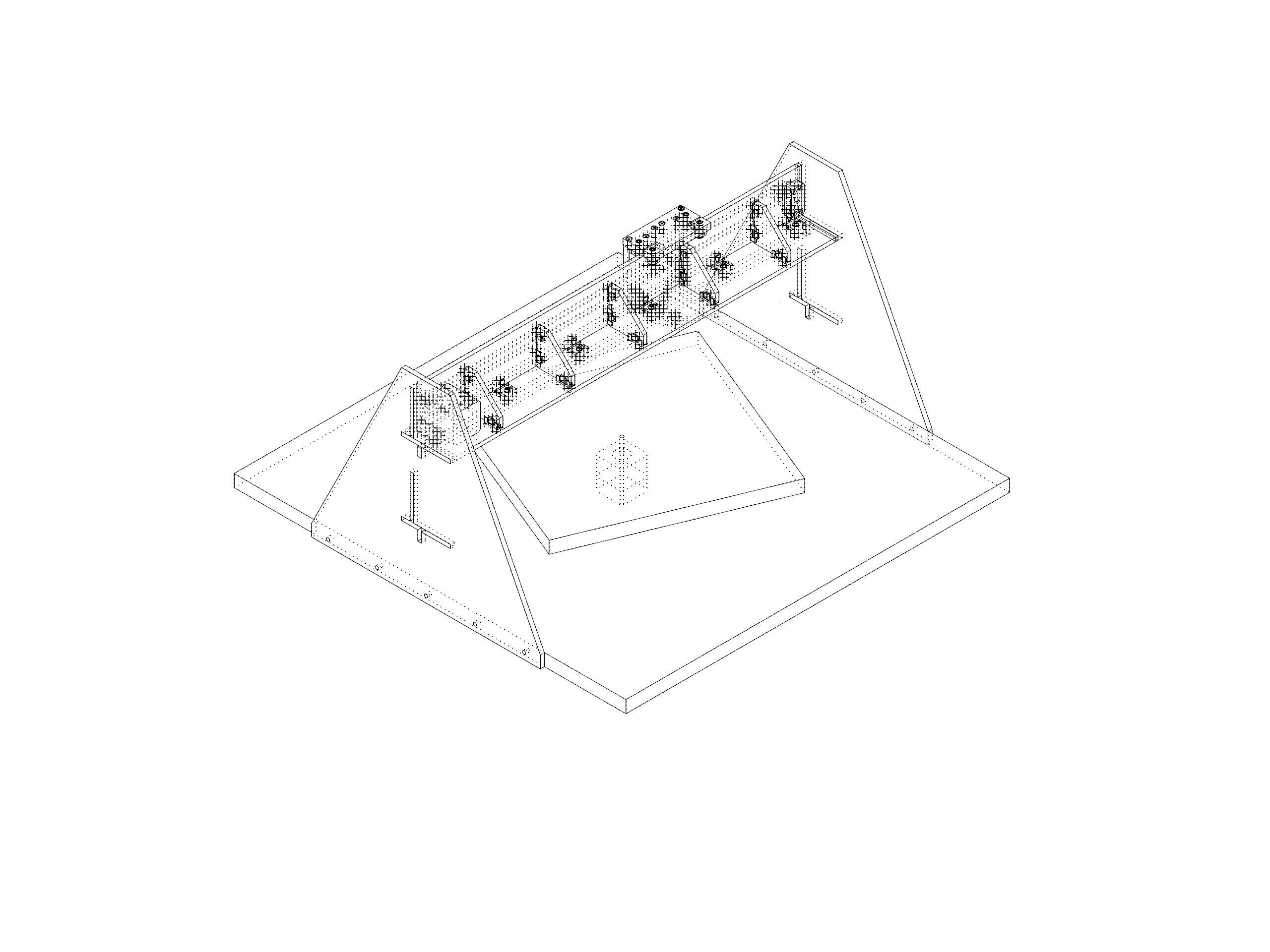For the machine design exercise this week, the Harvard section teamed up to build a 2-axis drawing machine, using a gantry driven by a stepper motor and rotating canvas as the secondary axis. Given each team member’s varying expertise, we strategically distributed work and got started.
David Gil had been working on a project, which generated compelling painted works via atypical and somewhat mechanical methodologies. As a starting point, our group decided to use an idea of his as a foundation for this machine. David Gil was hoping to use this machine for an installation and the scope was fairly straightforward for our machine building assignment. He sent an initial concept drawing for the machine, which identified a need for a gantry suspended above a rotating canvas.
The project initially aimed to use an 18 inch square canvas, however, due to the constraints of our laser cutter, this was instead shifted to a 12 inch canvas. Jake Read shared a gantry design via GitLab, which expedited the design process. It depended upon quarter inch plexiglass as a structural material, 3d printed joints to fix each piece together, lead screw for movement of our end effector, a retrofittable 3d printed end effector mounting design, and stepper motor to drive the system. With help from Nathan and Ken, we were able to quickly print and fabricate the gantry.
After cutting the exact file, we realized that this would be mounted more effectively if the plexiglass could be extended, which would allow for a pressure fitting joint when fixing the verticals. The plexiglass parts were re-cut and verticals were designed in order to accommodate. In designing the upright parts to suspend this gantry, mounting holes were positioned and applied to the parts in order to fix them to a rigid board beneath. These uprights were also triangulated in order to increase strength, while conserving material.
Once assembled, others on the team worked diligently to calibrate the mechanical aspects, while also developing the necessary code in order to communicate with the machine and convert geometry and commands to executed movements.






